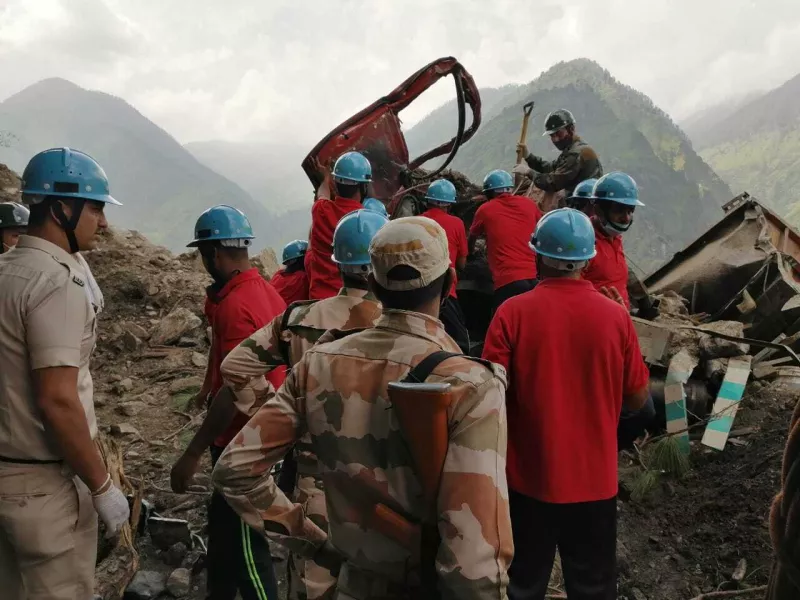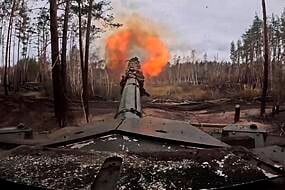Falling rocks forced rescuers to suspend their search on Thursday for victims of a large landslide that swept across a highway in the mountains of northern India a day earlier, killing at least 14 people.
The rescuers pulled back after loose rocks began falling at the site, said district administrator Abid Hussain Sadiq.
With darkness falling, the search for 25 to 30 people believed still missing was unlikely to resume until Friday.

Rescuers recovered 10 bodies on Wednesday and four on Thursday and found a bus crushed by the avalanche, Mr Sadiq said. The exact number of the people who were on the bus was not known.
The bus, a truck and two cars were smashed in the landslide in Himachal Pradesh state’s Kinnaur district. Eight bodies were found in a car and two were found in the truck, which rolled down to a riverbank.
Fourteen people were rescued, said Vivek Kumar Pandey, a spokesman for a paramilitary force involved in the search.
More than 100 rescuers, including police and paramilitary personnel, had been deployed to clear the rubble using four earth removers.
Television images of the disaster showed boulders and rocks rolling down the hillside before crashing into vehicles on the highway.
Heavy rain has caused several landslides in Himachal Pradesh state over the past few weeks. The region is 375 miles north of New Delhi.
Meanwhile, heavy rains lashed another north Indian state, Uttar Pradesh, with flooding disrupting the lives of more than 500,000 people.

State Relief Commissioner Ranvir Singh said floodwaters submerged more than 1,200 villages, forcing people to move to about 1,000 state-run relief camps.
Eleven of the state’s 75 districts have been hit by heavy rains, with Prayagraj receiving 102mm (four inches) in 36 hours.
“Floodwaters have entered thousands of homes with people also facing problems because of power outages,” said Abhilash Narain, a Prayagraj resident.
Disasters caused by landslides and flooding are common in India during the June-September monsoon season.
In August, about 150 people were killed by landslides and flooding triggered by monsoon rains in western India’s Maharashtra state.
Experts say heavy rainfall along India’s western coast is in line with how rainfall patterns have changed in past years due to climate change, as the warming Arabian Sea drives more cyclones and more intense rainfall over short periods of time.








